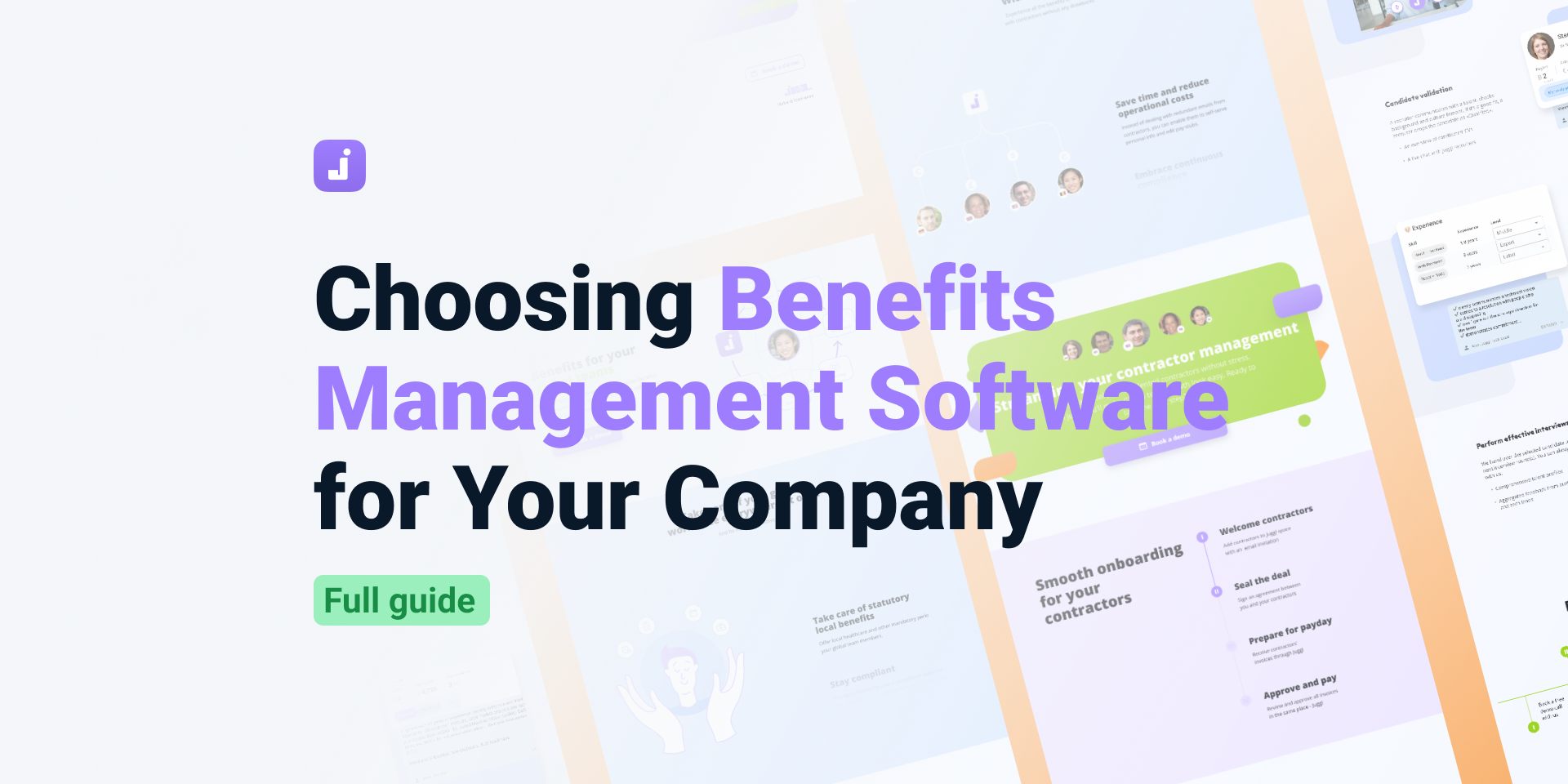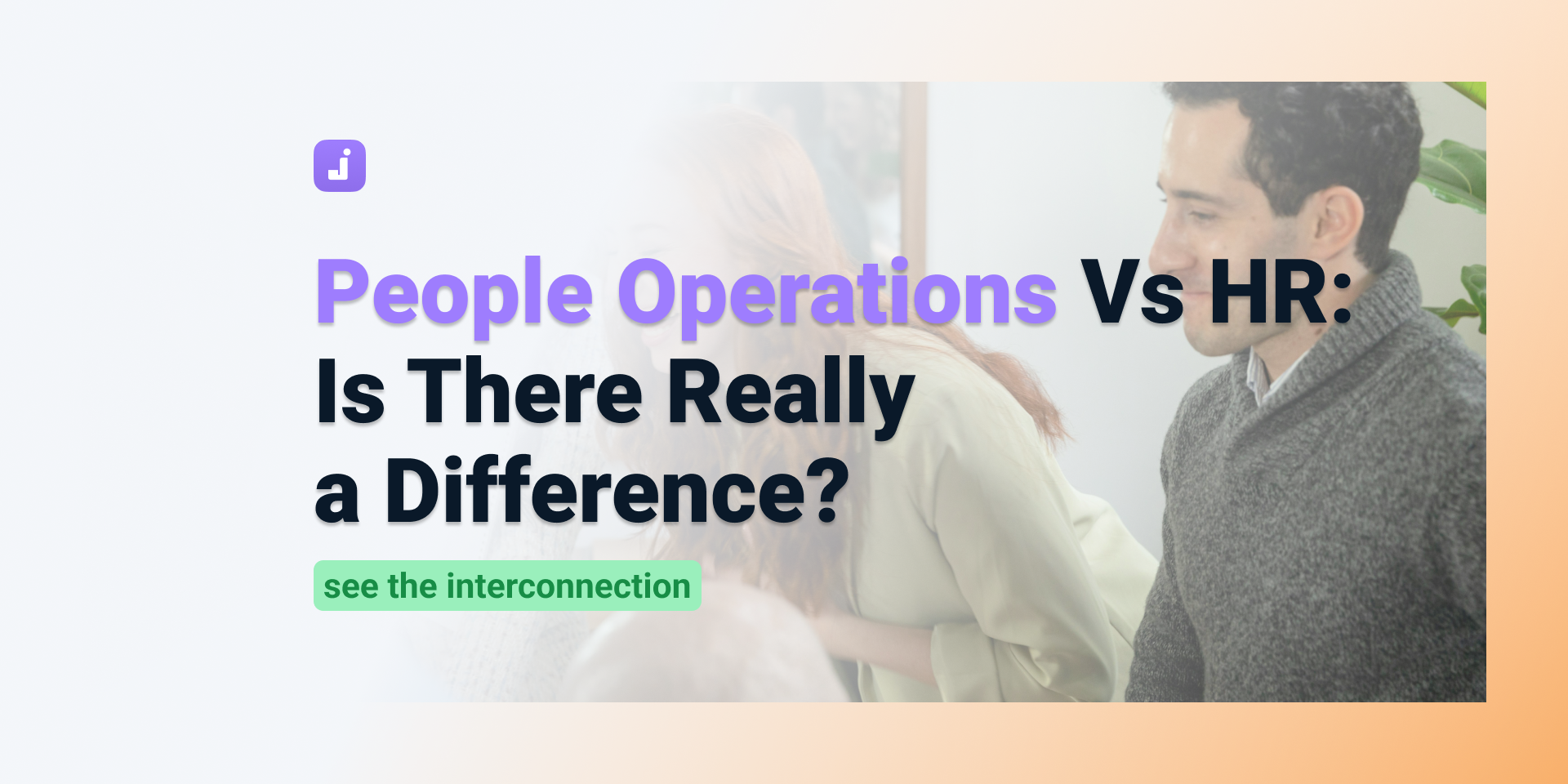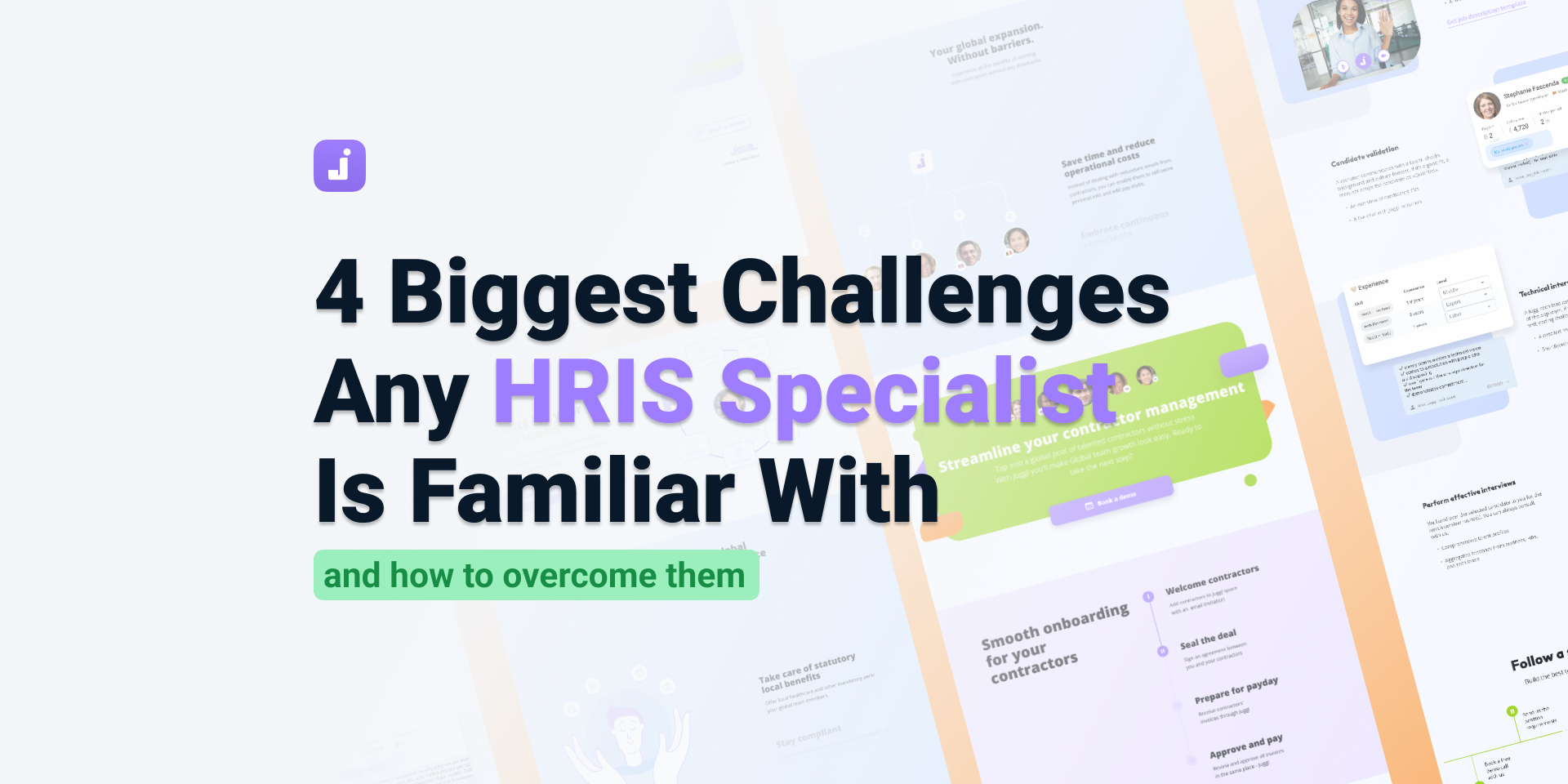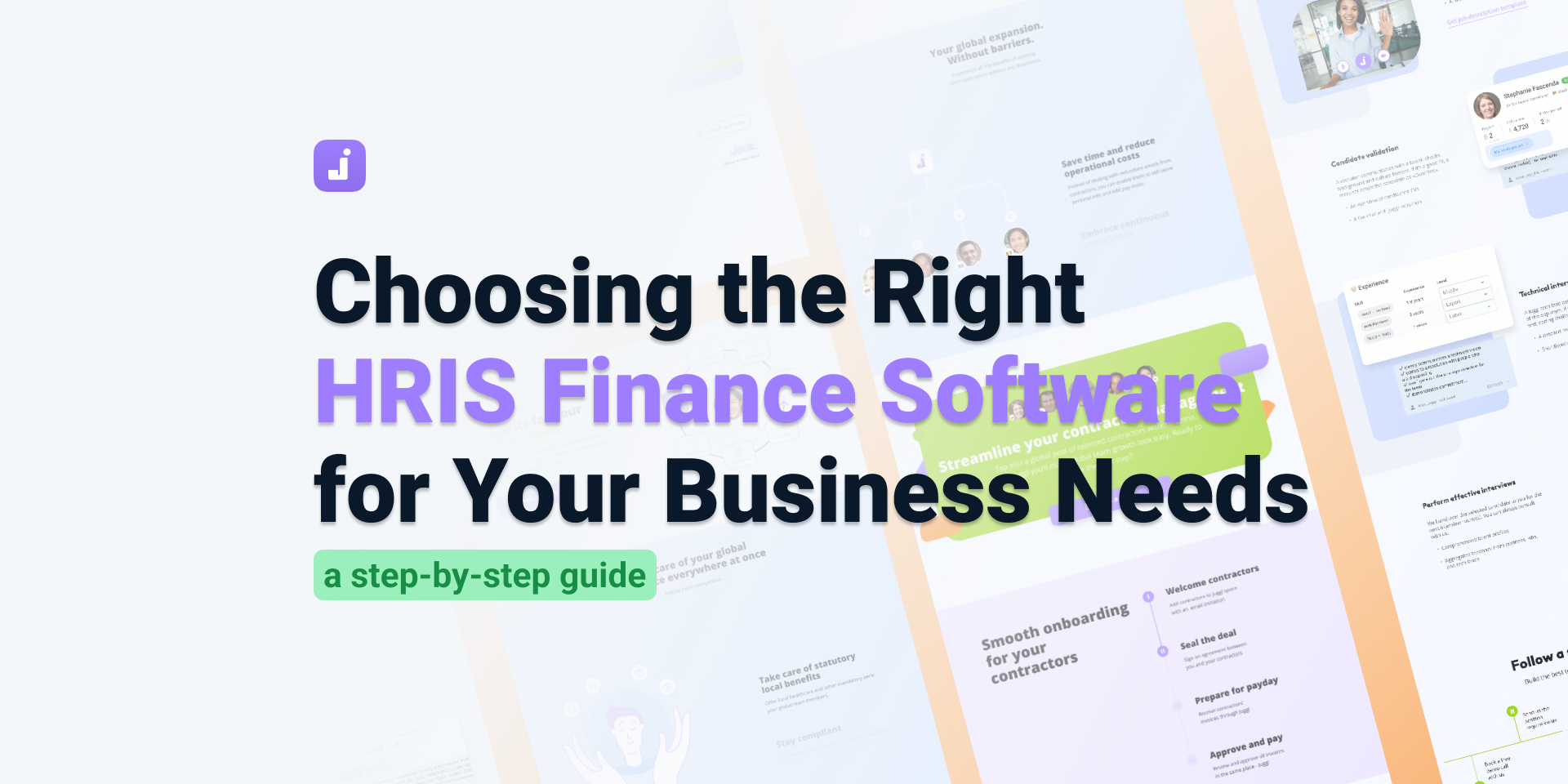Choosing Benefits Management Software for Your Company: Full Guide
It's become essential to offer your employees more than just paychecks. When looking for a job, applicants pay attention to perks and benefits that come with the job offer. In fact, as many as 88% of employees rely on their employers to take care of their wellbeing.
However, managing employee benefits is no small task. As your business grows, the number of plans, vendors, and compliance rules multiplies. What used to work for a small local team quickly becomes fragile, slow, and stressful. At some point, getting an employee benefits software becomes a step worth considering. It can integrate with your HRIS and Finance toolkits so that everybody benefits from it in the long run.
This guide shows you how to pick benefits management software that actually reduces the workload and makes life easier for HR and employees alike. You’ll get clear, practical advice on what capabilities matter, how to evaluate your options, and which trade-offs are worth making depending on your company’s size and goals. We’ll also highlight best practices and common pitfalls to avoid when introducing this kind of software, as well as ways to measure ROI from this advancement.
What Is Benefits Management Software?
Benefits management software is a digital system that helps companies organize, track, and administer employee benefits such as health insurance, retirement plans, paid time off, and other perks. Instead of juggling spreadsheets, forms, and manual updates, HR teams use this software to manage the entire benefits lifecycle in one centralized place.
At its core, the purpose of employee benefits software is to make complex processes simpler and more transparent. For Operations and admin staff, it automates repetitive tasks, reduces errors, and ensures that employees get accurate information about their coverage and eligibility. For HR teams, this means less time chasing paperwork and more time focusing on strategy, culture, and employee engagement. For employees, it means having an easy-to-use portal where they can view, compare, and manage their benefits anytime without relying on back-and-forth with HR to make every change.
There are two main types of systems on the market. Standalone benefits management tools specialize in handling benefits only. This is ideal for companies that already have separate payroll or HR systems they’re happy with. On the other hand, integrated HRIS software (Human Resource Information Systems) combine benefits management with other HR functions such as payroll, time tracking, and performance management. These all-in-one solutions simplify data sharing across the organization and provide a single source of truth for HR operations.
Whether you choose a dedicated benefits platform or an HRIS with built-in features, the goal is the same – to make benefits administration smoother and more accurate for everyone involved.
Why Your Company Needs HR Benefits Management Software
Managing employee benefits with spreadsheets or disconnected tools might work when your team is small. However, manual benefits administration is time-consuming, error-prone, and hard to scale, which turns into a bottleneck once you start scaling. HR teams often find themselves buried in forms and email threads, having to manage last-minute corrections. Meanwhile, employees get frustrated when they can’t easily understand or update their benefits information.
That’s where HR benefits management software changes everything. Instead of tracking eligibility and deductions by hand, the system calculates and updates everything automatically. It syncs with payroll, ensures compliance with regulations, and helps HR teams keep data consistent across vendors.
For employees, modern platforms include employee self-service portals where they can review available benefits and request any of them on their own time. This not only reduces HR’s workload but also empowers employees to take ownership of their benefits – a small but powerful shift that increases engagement and satisfaction.
For Operations teams, specialized software provides transparency, and better visibility into the processes leads to smarter decisions. When benefits data is easy to analyze, companies can see what’s working (from popular fringe benefits like wellness stipends to underused coverage options) and adjust their programs accordingly. The result is a smoother employee experience and a benefits strategy that truly supports your business goals.
Key Features to Look For in Employee Benefits Administration Software
Comprehensive Benefits Enrollment and Tracking
A solid benefits platform should make tracking benefits accurate, and intuitive. Look for systems that guide employees through their options step-by-step, automatically check eligibility, and calculate contributions in real time. The best tools also allow HR teams to track participation, coverage levels, and plan utilization without digging through multiple dashboards. Automated reminders and configurable workflows can simplify user experience, while real-time updates ensure that any changes or requests flow smoothly through to payroll and reporting systems.
Employee Self-Service Portals
Modern employees don't want to depend on HR office hours to use their paid time off. They expect control over their own benefits. Self-service portals let workers make requests, upload documents, and review their benefit balances at any time. This reduces the constant back-and-forth with HR and minimizes administrative errors. A well-designed portal should feel as easy to use as any consumer app: mobile-friendly and visually clear. When employees can access benefits information on demand, engagement rises and HR gains valuable time back to focus on strategy instead of routine support tasks.
Integration with HRIS and Payroll Systems
This feature is essential for keeping data consistent and accurate. When your benefits management tool connects directly with your HRIS and payroll systems, you eliminate double entry and reduce the risk of mismatched records. Enrollment changes automatically adjust payroll deductions and eligibility updates sync instantly across platforms. This creates a unified HR ecosystem where every system communicates to the others, saving valuable time and giving HR leaders a complete picture of workforce costs and benefits participation.
Analytics and Reporting Tools
Data-driven insights is what makes benefits management truly strategic. Strong reporting features let you analyze trends in benefit usage, which sets the basis for strategic workforce planning. Look for platforms that make reporting flexible and exportable with visuals that clearly show where your benefits program is excelling and where there’s room to improve.
Compliance Management and Security Features
A dependable platform keeps your company aligned with labor laws, ACA requirements, and data privacy regulations automatically. Features like built-in audit trails, compliance alerts, and secure document storage reduce risk and administrative stress. Data security (encryption, role-based access, and regular system audits) is just as crucial to protect sensitive employee information. With strong compliance and security features, HR teams can manage benefits confidently knowing both employees and the company are fully protected.
How to Choose the Right Benefits Management Software for Your Organization
]Selecting the right employee benefits administration software can feel overwhelming, but breaking it down into a checklist makes the process easier. Use this guide to ensure you evaluate each critical factor:
- Assess your company size and needs. Identify your current employee count and anticipated growth. Determine whether you need a standalone benefits platform or a fully integrated HRIS. Consider the complexity of your benefits offerings (health insurance, retirement plans, fringe benefits, PTO, etc.).
- Define your budget. Try to evaluate the software costs against potential ROI (e.g. reduced admin time, fewer errors, improved employee engagement). Remember to consider long-term scalability: cheaper software may not meet your future needs.
- Check integration capabilities. Ensure the software connects seamlessly with payroll, HRIS, and accounting systems. Confirm real-time data synchronization for accurate deductions, eligibility, and reporting. Make sure to ask about pre-built integrations and API availability when meeting with the software providers.
- Review compliance features. Verify support for regulatory requirements (ACA, HIPAA, GDPR, or local laws). Look for automated alerts, audit trails, and secure document storage. Your top priority should be to ensure the platform reduces risk for both employees and the organization.
- Assess support and training. Ask about onboarding assistance, customer service availability, and training resources. Determine whether the vendor provides ongoing updates and system optimization support. Juggl offers free onboarding: we will guide you through your first month and help you get everything right on the first try.
Evaluating the ROI of Benefits Management Software
Investing in employee benefits administration software can yield measurable returns for your organization. Tangible ROI often comes in the form of time and cost savings. Automated enrollment and payroll integration drastically reduce administrative hours, freeing HR professionals to focus on strategic initiatives rather than manual updates. Fewer errors in deductions and eligibility also prevent costly payroll corrections and compliance penalties.
Beyond the numbers, intangible ROI can be just as impactful. Modern platforms improve the employee experience by providing transparency and convenience. Employees can access their benefits information anytime, make informed decisions about fringe benefits, and feel empowered in managing their own plans. This increased engagement often translates to higher retention rates, reducing turnover costs and supporting a more stable workforce.
To evaluate your ROI, make sure to track these metrics:
- Administrative time saved. Hours HR spends on enrollment, updates, and payroll deductions before vs. after implementation.
- Error reduction. Frequency of payroll, benefits, or eligibility mistakes.
- Cost savings. Reduction in penalties, manual corrections, and redundant software subscriptions.
- Employee satisfaction. Engagement and feedback scores regarding benefits experience.
- Self-service adoption: Percentage of employees using the portal for enrollment, updates, or plan comparison.
Final Thoughts: How Benefits Management Software Helps You Build a Better Employee Experience
When you choose the right employee benefits administration software, you invest in a strategic decision that directly impacts your workforce, HR operations, and overall company culture. A quality platform can help you simplify benefits enrollment, reduce administrative burden, eliminate errors, and ultimately free HR teams to focus on strategic initiatives like employee engagement and talent development.
One standout solution in the market is Juggl, a comprehensive HRIS that unifies HR, Operations, and Finance data into one comprehensive database. With Juggl, your company can manage all aspects of employee benefits within a single platform. Juggl also emphasizes usability, giving employees a mobile-friendly, intuitive self-service portal that makes enrollment and updates easy and transparent. For HR leaders, this means less manual work, greater operational efficiency, and a complete view of workforce costs and benefits utilization.
Choosing the right software is a solid step toward a smoother, more strategic benefits program. Start evaluating platforms today, comparing features, integrations, and scalability to find the solution that best fits your company’s needs. With a platform like Juggl, you can not only streamline people operations but also create an employee experience that shows people they are valued and supported. Contact us today for a free demo to see how Juggl can transform your internal workflows and help your team thrive.











